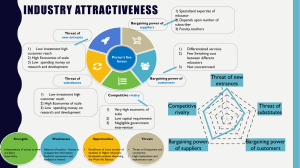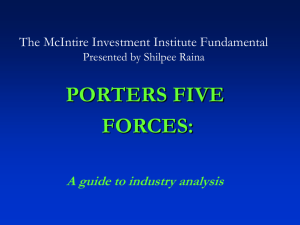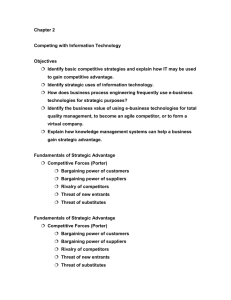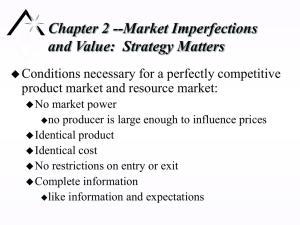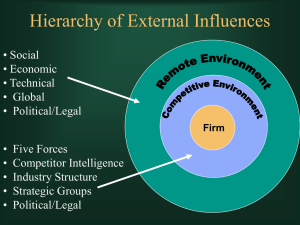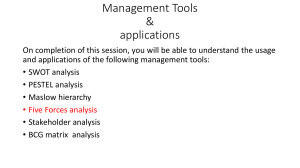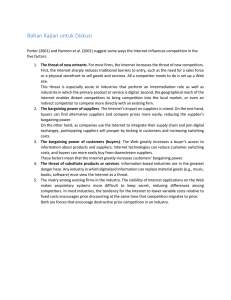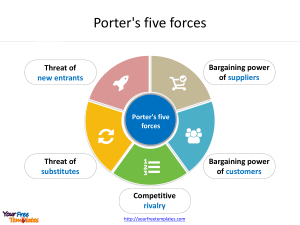P5CFM - POSMIT
advertisement
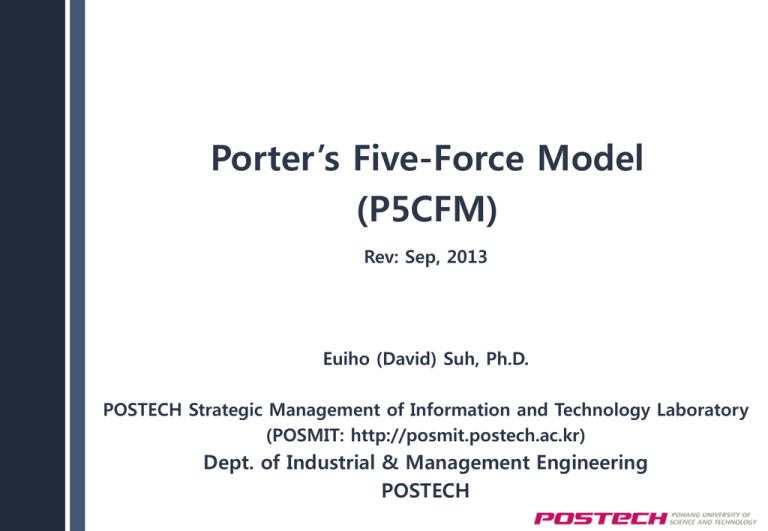
Porter’s Five-Force Model (P5CFM) Rev: Sep, 2013 Euiho (David) Suh, Ph.D. POSTECH Strategic Management of Information and Technology Laboratory (POSMIT: http://posmit.postech.ac.kr) Dept. of Industrial & Management Engineering POSTECH P5CFM (1/3) ■ What is P5CFM (Porter’s Five-Force Model)? – A tool to know about difference forces that impact on a company’s ability to compete – A tool to diagnose the principal competitive pressures in a market – A tool to assess how strong and important each force is Threat of Potential Entrants Bargaining Power of Suppliers Degree of Existing Rivalry Threat of Substitutes 2 Bargaining Power of Buyers P5CFM (2/3) ■ How to use P5CFM? Threat of Potential Entrants – External Analysis for the firm – Analysis all the activities according to the description below Bargaining Power of Suppliers Degree of Existing Rivalry Bargaining Power of Buyers Threat of Substitutes Force Degree of existing rivalry Threat of potential entrants Bargaining power of suppliers Bargaining power of buyers Threat of substitutes Description The major determinant of the competitiveness of the industry for most industries Many new entrants will decrease profitability for all firms in the industry When suppliers of raw materials, components, labor, and services have a strong power, they may refuse to work with the firm, or charge excessively high prices for unique resources The ability of customers to put the firm under pressure, which also affects the customer's sensitivity to price changes The existence of products outside of the realm of the common product boundaries increases the propensity of customers to switch to alternatives 3 P5CFM (3/3) ■ Example – A lubricants industry analysis 4

